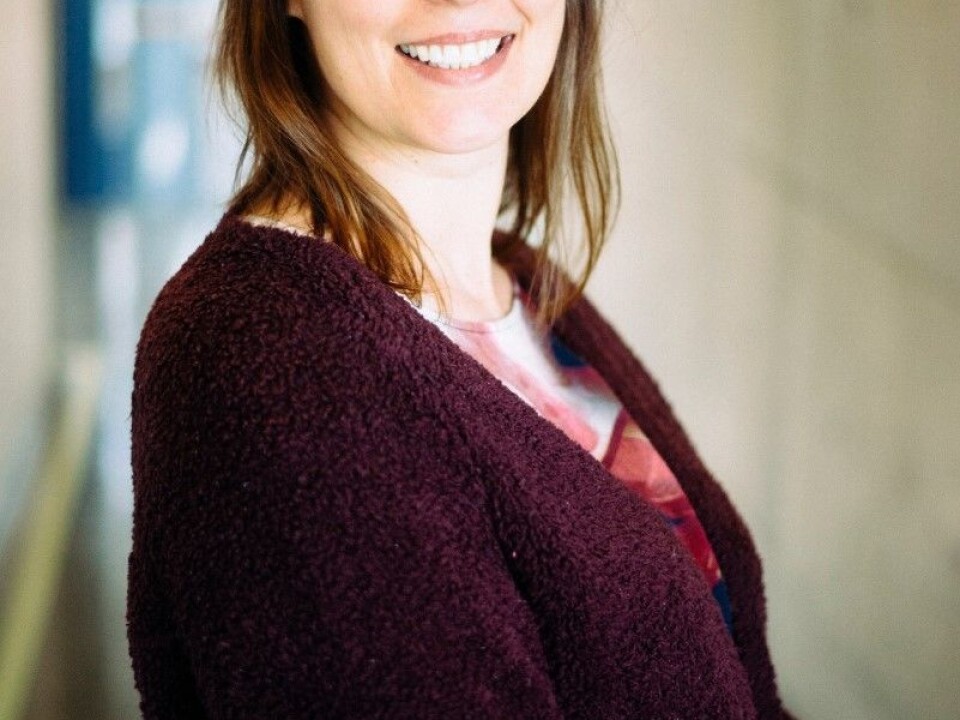This article was produced and financed by University of Stavanger

"Alcohol and other drug treatment needs to involve the family"
Treatment for alcohol and drug addiction is more effective when the family is involved. However, they seldom are. Why is this the case?
Between 50,000 and 150,000 children in Norway live with a parent whose alcohol consumption is in the risk zone. The same might apply to as many as 100,000 spouses or partners.
Affected family members experience feelings of despair and hopelessness. Many of them develop afflictions of their own because of long-term strain.
"Addiction as well as alcohol and other drug problems affects the entire family with unpredictability, stress and conflict", says sociologist Anne Schanche Selbekk.
She is a consultant at KoRus Vest Stavanger (the Competence centre for alcohol and other drug issues)), which is funded by the Norwegian Directorate of Health.

In her recent doctoral thesis from the University of Stavanger, she looks at how alcohol and other drug (AOD) treatment may benefit the family.
Affected family members
Previous research has shown how difficult it is to be close to someone with an addiction. It is also well documented that involving the family is an effective measure when treating addiction, according to Selbekk. The actual treatment becomes more effective, and it also improves relationships between the family members.
A study of patients in outpatient AOD treatment carried out in 2013 showed that half of them lived together with someone. Despite this, family consultations were only carried out in eight per cent of the cases.
"It is surprising that there is such a gap between theory and practise. Families are not sufficiently involved, even though we know that it is important and that it works", says Selbekk.
Broken bonds
One of the family members Selbekk spoke to put it like this:
"It is important that we are involved right from the start. At that time there is still something to build on – a will to stick together."
The sad truth is that when an addict eventually enters a treatment programme, the patient's bonds to his family have often been broken long time ago. Too much strain over a long period of time causes families to split apart.
Ten families
Selbekk interviewed therapists and managers at three AOD treatment institutions in Norway. In addition, she spoke to ten families that had been involved in treatment. She interviewed the patients themselves as well as partners, parents and adult children.
Alcohol was the problem for most of these families.
The study included families that had found their way back together again as well as families that were unsure of whether to carry on with their relationship.
Family needs
When a person begins treatment, there is always the hope that things will change and improve for the family.
Involvement is not only important for the person using alcohol and other drugs, but also for affected family members. It gives them the opportunity to process their feelings and carry on with their lives.
In this case, each family member contributes with their story, and the family develops a common language to talk about problems and find solutions. In this way trust can be rebuilt and the treatment can be adjusted to the changes that take place in the family, according to Selbekk.
"In the opposite case, the family might experience a double exclusion. First they are excluded because of the escalating substance use, and then they are kept out of the treatment process", she says.
Rehabilitating individuals
Selbekk believes today's situation is characterised by strong patient rights and a system that favours help for the individual.
Health is first and foremost seen as an individual issue.
"We tend to view this as a rehabilitation of the mind and body of the individual", says Selbekk.
In 2004, the Norwegian Substance treatment reform gave persons having alcohol and other drug problems status as patients. This secured stronger rights, and addiction was recognised as a disease. However, these rights are linked to the individual. The family is often left out of the process.
More involvement
The Norwegian Substance treatment reform also gave patients better opportunity to define their own treatment. Selbekk acknowledges that it is important to focus on the patient, but that this also can lead to children and affected family members being relegated to the periphery.
"This can in turn intensify the differences. The addicted person might wish to keep the family out of it, even though it would benefit the other family members", she says.
Selbekk explains that the treatment institutions have become more streamlined in an attempt to make them more like somatic health institutions. She fears that what AOD treatment institutions used to be good at, such as valuing personal relations, is now in danger of disappearing.
Too expensive
Selbekk also believes that economy plays a part. The way treatment is counted and registered favours help for the individual at the expense of the family. Family consultations require more administration and potentially more therapists, and treatment institutions are not adequately compensated for this extra work.
"The social importance disappears under the radar. The potential reward is not reflected in the way treatment is organised", says Selbekk.
Treatment on three levels
Addiction is a complex phenomenon. When treating addiction it is important to work on both a medical, psychological and social level", says Selbekk.
On the medical and psychological level, both persons using alcohol or other drugs and their affected family members need to be offered help and support that is adapted to their situation.
The addict needs help to work on his or her relationship to the substance in question, while an affected family member might need help to process the experience of living with someone who suffers from addiction and alcohol or other drug problems. Moreover, they need to work on the relationship they have with each other.
Source:
Anne Schanche Selbekk: Troubled families and individualised solutions? An ontological, discursive and interactionist analysis of families’ involvement in alcohol and other drug treatment.
Doctoral thesis, the Faculty of Social Science at the University of Stavanger, 2016.
































